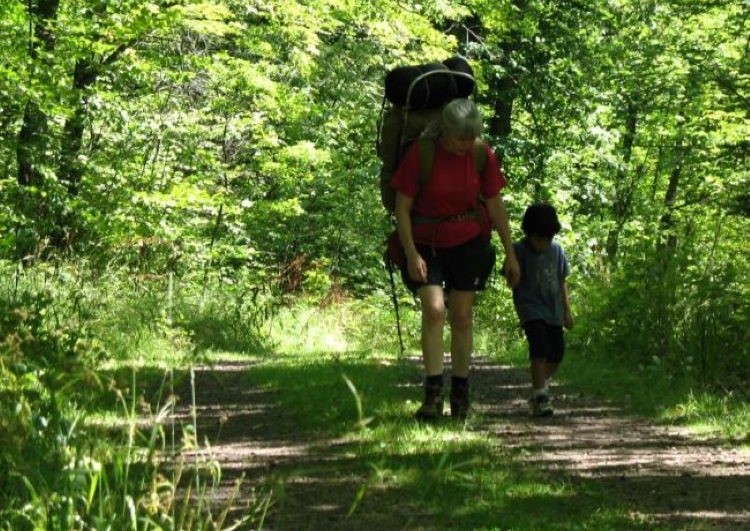As a graduate student in the summer of 1980, I spent five weeks at the Lake Itasca field biology station, where I meant to do an independent study of the alga Volvox. Under the microscope, Volvox is a beauty: a hollow, spinning sphere formed by a single layer of luminous green cells. Well, not completely hollow: parts of the outer skin fold inward and pinch off to form baby spheres, floating happily around inside the protective parent colony. A few of the babies already contain tiny spheres of their own. It’s like peering into a tiny galaxy, each green world giving birth to the next.
I was supposed to collect and analyze Volvox samples from one of the streams that fed the lake. But I was immature, easily distracted by the volleyball games and bike trips and bar outings. And by a tumultuous relationship that siphoned my attention. I let the project peter out.
I signed up for a limnology class instead. Before I cracked the textbook, I’d had no idea that a series of ecosystems existed beneath the calm surface of a lake, stratified by gradations in light penetration and temperature. Surface waters are lit and warm, supporting green algae and a host of creatures. Bottom waters are cold and dark, allowing the slow decay of dead plants and animals. But at a certain point in the spring and the fall, someone or something pushes the puree button. The lake becomes a whirling soup of chemical solutes and chlorophyll and mud and dead plants and animals, careless of their appropriate places. It’s as if God has thrown up his hands--“Do it again!”—like a delighted child.
Turning over is a natural effect of seasonal changes in a temperate climate, but to me it seemed as if the lake had simply decided, in some mysterious way, to bring light to darkness and darkness to light.
---------
There was a darker side to that summer. I was scared I was pregnant. My boyfriend was far away, visiting his brother in Hawaii, and I did not trust his love. One night after a long, tearful argument on the phone—at midnight, from an isolated bar four or five miles out from the field station—I emerged from the booth to find that everyone else had left. I didn’t have a car. I was too embarrassed to ask for help. So I started walking.
The night was cool and misty, partially lit by a pale moon. I would just follow the road back,
I thought. But it grew blacker under the trees. A doe crashed out of the forest and leaped across the road in front of me. A paranoia surfaced. Who else might be out here, on his way to the bar? When I saw headlights approaching, I jumped into the forest and hid behind bushes. After it passed, I walked as fast as I could, breathing puffs of mist in and out, in and out. Time itself faltered, so that it seemed as if I’d be on this road forever.
I was scared I would miss the turnoff, but I didn’t, and eventually I slipped into
the cabin bunk-bed, my heart thumping.
The next day, my classmates and I piled into the boat, nets and jars and secchi
discs in hand. We moved out into deeper water. We had to complete our careful
measurements today, before the lake did indeed turn over.

No comments:
Post a Comment